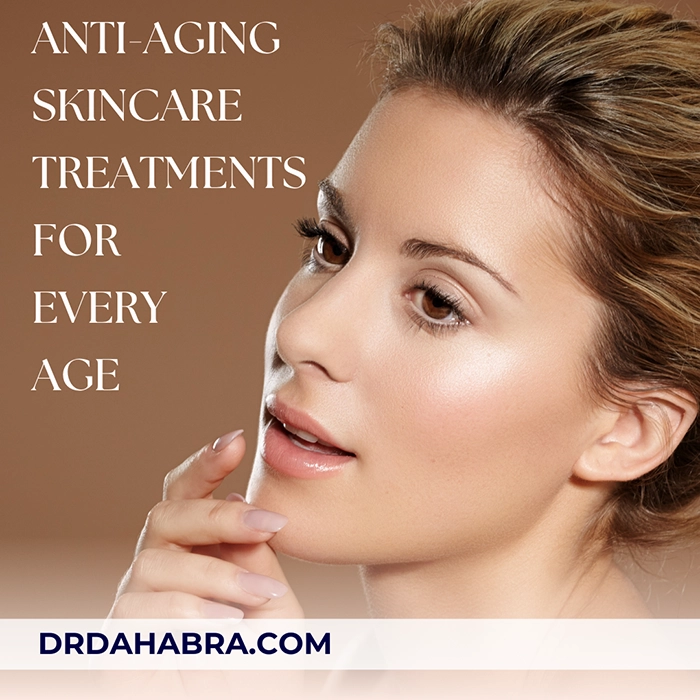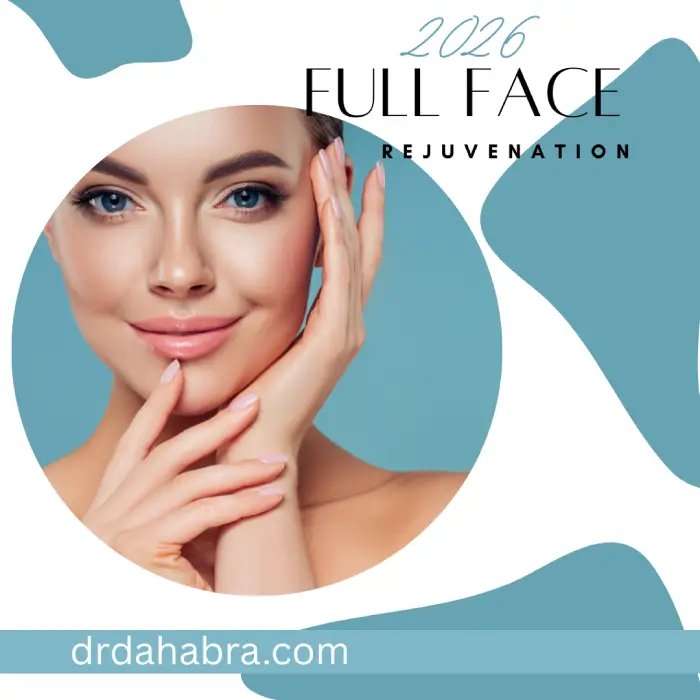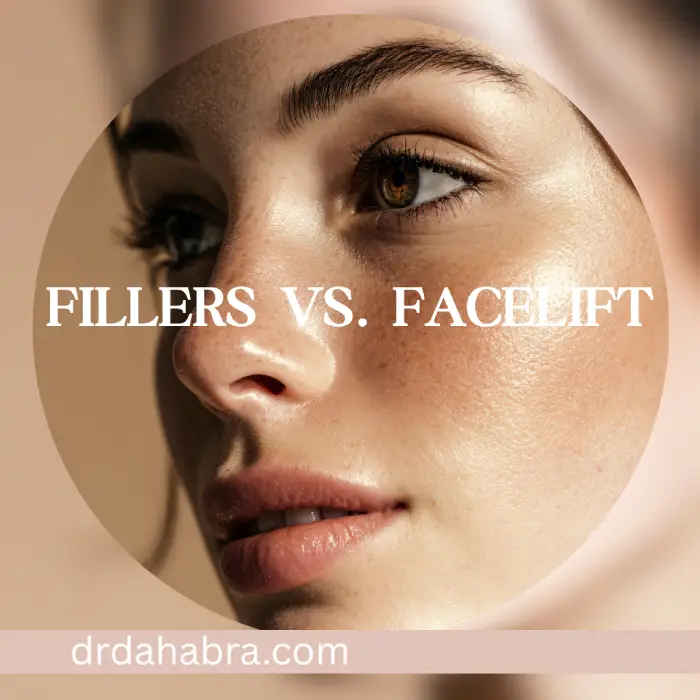The Ultimate Guide to Anti-Aging Treatments for Your 30s, 40s, and 50s
A Beginner’s Guide to Anti-Aging Treatments
Aging is a natural process, but with advancements in dermatology and skincare, there are numerous ways to slow down its effects. This article talks about anti-aging skincare treatments for every age.
Whether you’re in your 30s, 40s, or 50s, understanding anti-aging treatments can help you maintain a youthful look.
The choices can be overwhelming, from simple skincare routines to more advanced procedures like Botox and laser therapy. Knowing what works best for different ages and skin types ensures the best results.
We will walk you through the most effective anti-aging treatments for skin, face, eyes, and hands, helping you make informed decisions about your skincare routine.
Table of Contents
1. Understanding the Aging Process: How Skin Changes Over Time
2. Best Anti-Aging Skincare Routines for Every Decade
3. Injectable Fillers: Plumping and Smoothing Aging Skin
4. Botox and Dysport: Smoothing Wrinkles and Preventing Fine Lines
5. Retinoids: The Gold Standard in Anti-Aging Treatments
6. Chemical Peels: Revitalizing Dull and Aging Skin
7. Laser Treatments: Rejuvenating the Face and Body
8. Anti-Aging Treatments for Eyes: Reducing Puffiness, Wrinkles, and Dark Circles
9. Anti-Aging Treatments for Hands: Restoring Volume and Youthful Appearance
10. Face Treatments to Look Younger: What Works Best?
11. Non-Invasive vs. Invasive Anti-Aging Treatments: Pros and Cons
12. Diet and Lifestyle Tips to Support Anti-Aging Treatments
13. Potential Risks and Side Effects of Anti-Aging Treatments
14. Choosing the Right Anti-Aging Treatment for Your Skin Type
15. Frequently Asked Questions (FAQs)
16. Conclusion
17. References
1. Understanding the Aging Process: How Skin Changes Over Time
In your 30s, collagen production starts to slow down, leading to the first signs of wrinkles. Skin may become drier, and fine lines can appear around the eyes and mouth.
By your 40s, skin elasticity decreases, making sagging more noticeable. Sun damage may cause hyperpigmentation, and deep-set wrinkles become more prominent.
In your 50s, hormonal changes can lead to thinner skin, more pronounced wrinkles, and volume loss in areas like the cheeks and hands. Aging skin treatments become essential for maintaining a youthful appearance.
2. Best Anti-Aging Skincare Routines for Every Decade
In Your 30s:
- Start using retinoids to boost collagen production.
- Apply vitamin C serums for brightening and antioxidant protection.
- Always use broad-spectrum SPF to prevent sun damage.
In Your 40s:
- Incorporate hyaluronic acid to maintain hydration.
- Use peptides to improve skin firmness.
- Consider chemical peels for smoother skin texture.
In Your 50s:
- Use rich moisturizers with ceramides for hydration.
- Try growth factors to support skin repair.
- Opt for professional anti-aging treatments like lasers or injectables.
3. Injectable Fillers: Plumping and Smoothing Aging Skin
Dermal fillers are a popular choice for restoring lost volume in the face. They work by injecting hyaluronic acid or other substances to fill wrinkles, enhance facial contours, and restore a youthful look.
Common areas treated with fillers include the cheeks, lips, and under-eye hollows. These treatments are minimally invasive and offer immediate results.
While the effects can last anywhere from 6 months to 2 years, regular maintenance is required to sustain the youthful appearance.
4. Botox and Dysport: Smoothing Wrinkles and Preventing Fine Lines
Botox and Dysport are neuromodulators that temporarily relax facial muscles, reducing wrinkles and preventing new ones from forming.
Botox is widely used to target forehead lines, crow’s feet, and frown lines, while Dysport is known for its slightly faster onset and a softer, more natural look.
Both treatments last around 3 to 6 months, making them a convenient option for long-term wrinkle prevention.
5. Retinoids: The Gold Standard in Anti-Aging Treatments
Retinoids, derived from vitamin A, are one of the best anti-aging treatments for the skin. They boost collagen production, increase cell turnover, and reduce fine lines and pigmentation.
Over-the-counter options like retinol are great for beginners, while prescription-strength tretinoin offers faster, more dramatic results.
Using retinoids with sunscreen is essential since they can make the skin more sensitive to the sun.
6. Chemical Peels: Revitalizing Dull and Aging Skin
Chemical peels exfoliate the skin using acids like glycolic, lactic, or salicylic acid. They help improve texture, reduce pigmentation, and stimulate collagen.
Superficial peels require minimal downtime, while deeper peels may need a few days of recovery but offer more dramatic results.
Regular treatments can help keep the skin fresh, smooth, and youthful.
7. Laser Treatments: Rejuvenating the Face and Body
Laser treatments are highly effective for treating wrinkles, scars, pigmentation, and sagging skin.
Popular options include:
- Fractional lasers for deep resurfacing.
- IPL (Intense Pulsed Light) for pigmentation and redness.
- CO2 lasers for deep wrinkles and scars.
These treatments stimulate collagen production and can provide long-lasting rejuvenation.
8. Anti-Aging Treatments for Eyes: Reducing Puffiness, Wrinkles, and Dark Circles
The eye area is one of the first to show signs of aging. Best anti-aging treatments for eyes include:
- Botox for crow’s feet.
- Fillers for hollow under-eyes.
- Eye creams with peptides to improve elasticity.
Consistent skincare combined with professional treatments can help keep your eyes looking youthful.
9. Anti-Aging Treatments for Hands: Restoring Volume and Youthful Appearance
Hands often show age faster than the face. Aging skin treatments for hands include:
- Fillers to restore lost volume.
- Laser treatments to remove sunspots.
- Chemical peels for smoother skin.
Using sunscreen and moisturizing regularly also helps maintain youthful-looking hands.
10. Face Treatments to Look Younger: What Works Best?
Looking younger isn’t just about reducing wrinkles—it’s about improving skin texture, tone, and volume. Some of the best face treatments to look younger include:
- Microneedling – Stimulates collagen production, improving skin firmness and reducing fine lines.
- Radiofrequency (RF) Therapy – Uses heat to tighten sagging skin and enhance elasticity.
- Ultrasound Therapy (Ultherapy) – Penetrates deep layers of the skin to lift and tighten without surgery.
Combining these treatments can provide a natural, youthful glow, especially with a solid skincare routine.
11. Non-Invasive vs. Invasive Anti-Aging Treatments: Pros and Cons
Choosing between non-invasive and invasive anti-aging treatments depends on your goals, budget, and recovery time.
Non-Invasive Treatments (Minimal Downtime)
- Pros: Quick recovery, minimal side effects, more affordable.
- Cons: Results are gradual and may require multiple sessions.
Examples include chemical peels, Botox, fillers, laser treatments, and microneedling.
Invasive Treatments (More Dramatic Results)
- Pros: Long-lasting effects, fewer repeat treatments needed.
- Cons: Higher cost, longer recovery, potential risks.
Examples include facelifts, deep laser resurfacing, and fat grafting.
Both options offer great benefits, so it’s best to consult a dermatologist to determine what suits your needs.
12. Diet and Lifestyle Routine Tips to Support Anti-Aging Treatments
Even the best anti-aging treatments for skin won’t work as well if you don’t take care of your body from the inside out.
- Eat a collagen-boosting diet – Foods rich in antioxidants, vitamin C, and healthy fats support skin health.
- Stay hydrated – Drinking enough water keeps skin plump and radiant.
- Reduce sugar intake – Excess sugar can cause premature aging by breaking down collagen and elastin.
Other key habits include getting enough sleep, managing stress, and avoiding smoking, significantly impacting skin aging.
13. Potential Risks and Side Effects of Anti-Aging Treatments
While anti-aging treatments for the face and body can work wonders, it’s essential to understand potential risks.
Common Side Effects
- Redness, swelling, or bruising – Temporary but common after Botox, fillers, and laser treatments.
- Skin irritation – Retinoids and chemical peels can cause dryness and sensitivity, especially in beginners.
- Hyperpigmentation or scarring – More familiar with aggressive treatments like deep peels or lasers.
Always follow post-treatment care instructions and choose an experienced professional to minimize risks and achieve the best results.
14. Choosing the Right Anti-Aging Treatment for Your Skin Type
Not all anti-aging treatments for skin work the same for everyone. Your skin type—whether dry, oily, sensitive, or combination—affects how treatments respond.
- Dry skin: Hydrating treatments like hyaluronic acid fillers, gentle peels, and rich moisturizers.
- Oily skin: Treatments that control excess sebum, such as retinoids, chemical peels, and laser resurfacing.
- Sensitive skin: Gentle approaches like microneedling, peptides, and non-abrasive skincare.
- Combination skin: A mix of treatments tailored to specific concerns, like Botox for fine lines and lasers for pigmentation.
Understanding your skin type helps you choose the most effective and safe anti-aging treatments for long-term results.
15. Frequently Asked Questions (FAQs) about Anti-Aging Skincare Treatments for Every Age
Q1. What is the most effective anti-aging treatment?
Concise Answer: The most effective anti-aging treatment depends on your skin concerns, but retinoids, Botox, and laser therapy provide the best results.
Detailed Answer: There’s no single “best” anti-aging treatment, as it depends on individual skin types and aging concerns. Retinoids (like tretinoin) are the gold standard for reducing fine lines, boosting collagen, and improving skin texture.
For dynamic wrinkles, Botox or Dysport can prevent and smooth out expression lines. If you’re dealing with pigmentation, scars, or loss of firmness, laser treatments, chemical peels, and microneedling are excellent choices.
As explained above, combining good skincare with professional treatments for long-term anti-aging benefits is key.
Q2. What is the number one thing for anti-aging?
Concise Answer: Sunscreen is the most important anti-aging product, as it prevents sun damage, wrinkles, and premature aging.
Detailed Answer: Daily broad-spectrum sunscreen (SPF 30 or higher) is the most effective way to prevent wrinkles, fine lines, and sunspots. UV rays break down collagen and elastin, causing sagging and discoloration.
Even the best anti-aging treatments won’t be as effective without proper protection. Additionally, pairing sunscreen with antioxidants (like vitamin C), retinoids, and hydrating ingredients can further protect and repair aging skin.
Q3. What are the best anti-aging treatments for the face?
Concise Answer: The best face treatments to look younger include Botox, fillers, retinoids, laser therapy, and chemical peels.
Detailed Answer: If you want to maintain a youthful face, several treatments can help.
Botox smooths fine lines, fillers restore lost volume, and chemical peels improve skin texture. Retinoids and laser treatments stimulate collagen production for long-term benefits, helping to firm the skin and reduce wrinkles.
Combining these treatments and a solid skincare routine can provide the best anti-aging results.
Q4. What is the best anti-aging treatment for eyes?
Concise Answer: Botox, under-eye fillers, laser treatments, and eye creams with peptides are great for reducing wrinkles, puffiness, and dark circles.
Detailed Answer: The delicate skin around the eyes is one of the first areas to show aging.
Botox helps reduce crow’s feet, while dermal fillers can smooth hollow under-eyes. Laser treatments and chemical peels can address pigmentation and fine lines, improving overall brightness.
For maintenance, eye creams with retinol, peptides, and caffeine can help firm and depuff the skin over time.
Q5. What are the best anti-aging treatments for hands?
Concise Answer: Fillers, laser therapy, chemical peels, and hydrating skincare help restore a youthful look to aging hands.
Detailed Answer: Hands often show signs of aging due to sun exposure and collagen loss. Hyaluronic acid fillers can plump thin, veiny hands, while laser treatments and chemical peels reduce dark spots and improve texture.
Regular use of sunscreen, moisturizers with hyaluronic acid, and exfoliation can also help keep hands smooth and youthful.
Q6. Are anti-aging treatments safe?
Concise Answer: Yes, most anti-aging treatments are safe when performed by a qualified professional, but they can have potential side effects.
Detailed Answer: Non-invasive treatments like Botox, fillers, chemical peels, and lasers are generally safe when administered by an experienced dermatologist or aesthetician. However, risks include redness, swelling, bruising, and, in rare cases, allergic reactions.
More aggressive procedures, like deep peels or CO2 laser resurfacing, require careful aftercare. Always consult a professional to ensure the treatment is safe for your skin type and condition.
Q7. How often should I get anti-aging treatments?
Concise Answer: It depends on the treatment—Botox every 3-6 months, fillers every 6-18 months, and laser/chemical peels every 4-8 weeks.
Detailed Answer: The frequency of anti-aging treatments depends on the type and intensity. Botox and Dysport typically need touch-ups every 3-6 months.
Fillers last longer, between 6-18 months. Laser and chemical peels vary; light treatments may be done monthly, while deeper procedures require more downtime between sessions.
A dermatologist can create a customized treatment plan based on your goals.
Q8. What’s the difference between Botox and Dysport?
Concise Answer: Botox and Dysport reduce wrinkles, but Dysport spreads faster and works slightly quicker than Botox.
Detailed Answer: Botox and Dysport are neuromodulators that relax facial muscles to reduce wrinkles. The main difference is that Dysport has a thinner formula and spreads more quickly, making it ideal for larger areas like the forehead.
Botox is more precise, making it better for smaller areas like crow’s feet. The effects of Dysport may appear within 2-3 days, while Botox usually takes 5-7 days.
Q9. Can I combine multiple anti-aging treatments?
Concise Answer: Yes! Many treatments work better together, such as Botox with fillers or chemical peels with laser treatments.
Detailed Answer: Combining different anti-aging treatments can enhance results. For example, Botox smooths wrinkles, while fillers restore lost volume.
Laser treatments can improve skin texture, and chemical peels can boost radiance. However, it’s important to space out treatments appropriately and follow professional recommendations.
Q10. At what age should I start anti-aging treatments?
Concise Answer: In your mid to late 20s or early 30s, as this is when collagen production starts to decline.
Detailed Answer: Preventative anti-aging treatments for the face and skin can begin as early as your late 20s with retinoids, sunscreen, and antioxidants. In your 30s, treatments like Botox, peels, and microneedling can slow down wrinkle formation.
More advanced treatments like fillers and laser therapy become helpful in your 40s and 50s.
Q11. How long do anti-aging treatments last?
Concise Answer: Results vary—Botox lasts 3-6 months, fillers 6-18 months, and laser treatments several months to years.
Detailed Answer: The duration of anti-aging treatments for the skin and face depends on the type of procedure. Botox and Dysport typically last 3-6 months, while fillers can last 6 to 2 years.
Chemical peels and microneedling require regular maintenance, usually every 4-8 weeks. Laser treatments provide longer-lasting results, sometimes up to several years with proper skincare.
Q12. Do home anti-aging treatments work?
Concise Answer: Yes, but they are less effective than professional treatments and take longer to show results.
Detailed Answer: Home treatments like retinoids, LED light therapy, microneedling devices, and chemical exfoliants can help maintain skin health and slow aging. However, they won’t provide the dramatic results that professional lasers, fillers, or Botox offer.
Consistency is key with home treatments; combining them with in-office procedures yields the best outcomes.
Q13. Can anti-aging treatments remove deep wrinkles?
Concise Answer: Yes, but profound wrinkles require Botox, fillers, lasers, or more invasive procedures for the best results.
Detailed Answer: While retinoids and skincare can prevent fine lines, deeper wrinkles often need Botox to relax muscles, fillers to plump the skin and laser treatments for resurfacing.
Facelifts or deep laser resurfacing may be the best option in severe cases.
Q14. Are there any natural alternatives to anti-aging treatments?
Concise Answer: Yes! A healthy diet, proper skin care, facial exercises, and natural ingredients like aloe vera and vitamin C can help slow aging.
Detailed Answer: While professional anti-aging treatments for skin offer faster and more noticeable results, natural approaches can complement them.
Eating antioxidant-rich foods (like berries and leafy greens), using natural oils (like rosehip or argan oil), and staying hydrated can support skin health. Facial exercises and gua sha massage can improve circulation and firm the skin over time.
However, natural remedies may take longer to show visible results compared to clinical treatments like Botox or lasers.
Q15. What anti-aging treatments work best for sensitive skin?
Concise Answer: Gentle treatments like microneedling, light chemical peels, LED therapy, and hydrating facials are best for sensitive skin.
Detailed Answer: If you have sensitive skin, aggressive anti-aging treatments like deep chemical peels, potent retinoids, or intense lasers may irritate.
Instead, opt for gentle microneedling, light enzyme or lactic acid peels, and red-light LED therapy, which improves skin without excessive redness or peeling. Soothing skincare with ceramides, niacinamide, and hyaluronic acid can also enhance results while keeping skin calm.
Always consult a dermatologist before trying new treatments.
16. Conclusion: Anti-Aging Skincare Treatments for Every Age
Aging is inevitable, but looking and feeling youthful is entirely within your control. With the right anti-aging treatments for your skin, face, eyes, and hands, you can slow down time, enhance your natural beauty, and regain confidence in your appearance.
Whether you’re in your 30s preventing fine lines, your 40s restoring lost volume, or your 50s reversing deep-set wrinkles, there’s a perfect treatment for you. From Botox and fillers to laser therapy and retinoids, the options are endless—and they work.
Imagine waking up, looking in the mirror, and seeing radiant, firm, youthful skin staring back at you. No more worrying about sagging, dullness, or fine lines creeping in.
By investing in proven anti-aging treatments and a tailored skincare routine, you’re not just preserving your looks—boosting your confidence, embracing self-care, and redefining beauty on your terms.
Don’t wait until the signs of aging take over. The best time to start is now.
Whether you choose simple skincare solutions or advanced dermatological treatments, every step you take today shapes your look and feel tomorrow.
You deserve to look as young as you feel—so why not give your skin the care it craves?
We have covered everything about anti-aging skincare treatments for every age.
Enhance Your Natural Look with the Best Anti-Aging Skincare Treatments for Every Age with Dr. Dahabra
Experience expert anti-aging treatments for every age with Dr. Dahabra. Why wait to unlock your beauty?
Call us now at (954) 595-2607 or book online. Your journey begins with just a click or a call.
Embrace the beauty, embrace innovation – Embrace You.
17. References
Retinoids in the Treatment of Skin Aging: An Overview
National Institutes of Health (NIH)
Botulinum Toxin (Botox) for Facial Wrinkles: A Review of Efficacy and Safety
National Center for Biotechnology Information (NCBI)
The Role of Chemical Peels in Facial Rejuvenation: A Scientific Review
MDPI (Multidisciplinary Digital Publishing Institute)
The Science of Anti-Aging Skincare: Ingredients That Work
Wiley Online Library
Dysport vs. Botox: A Comparative Study in Wrinkle Reduction
ScienceDirect
The Role of Hyaluronic Acid in Anti-Aging and Skin Hydration
PLOS ONE




